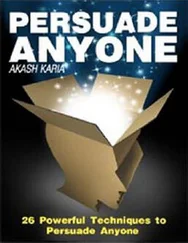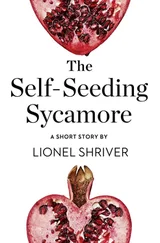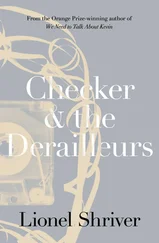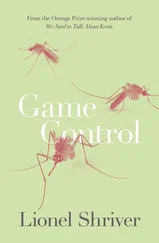I’m making myself a little sick here, but I’m afraid I did spout this sort of thing, and yes, Kevin was probably listening. But I doubt there was a household in the United States that didn’t talk about those shootings one way or another. Decry the “politics of hysteria” as I might, they hit a nerve.
I’m sure that this dance has emerged in such high relief in my mind because of where it took place. After all, it’s a small memory; whether to the disappointment of those parents or not, the event passed without a hitch, and as for the one student who probably remembers the evening as a calamity, I never even knew her name.
The gym. It was in that gym.
Because the middle school and high school had been built on the same campus, they often shared facilities. Fine facilities they were, too, for it was partly this good school that had drawn you to buy us a house nearby. Since, to your despair, Kevin shunned school sports, we’d never attended his middle school’s basketball games, so this glorified baby-sitting job remains my sole experience of that structure from the inside. Freestanding, it was cavernous, more than two stories high, slick and expensive—I think it even converted to an ice hockey rink. (How wasteful that the Nyack School Board has, last I read, decided to tear the whole thing down; students are apparently dodging PE courses by claiming that the gym is haunted.) That night, the arena made quite a booming echo chamber for the DJ. Any sports equipment had been cleared off, and though my expectation of balloons and bunting was clearly a hangover from my own dance debut doing the twist in 1961, they had hung a mirror ball.
I may have been a rotten mother—just shut up, it’s true—but I wasn’t so deplorable as to hang around my fourteen-year-old son at his school dance. So I positioned myself on the opposite side of the gym, enjoying a good view of his sideways slump against the cinder-block wall. I was curious; I’d rarely seen him in the context of his larger social milieu. The only student beside him was the unshakable Leonard Pugh, with his weaselly hee-hee face, and even at 100 yards exuding that greasy toadying quality, a sniggering obsequiousness that always seemed of a piece with his faint odor of day-old fish. Lenny had recently pierced his nose, and the area around the stud had got infected—one nostril was bright red and half again as large as the other; its smear of antibiotic cream caught the light. Something about that kid always put me in mind of brown smudges in underpants.
Kevin had recently conceived his tiny-clothes fashion, which (typically) Lenny had aped. Kevin’s black jeans might have fit him when he was eleven. The legs reached mid-calf, exposing dark hairs sprouting on his shins; the crotch, whose zipper would not quite close, well sponsored his equipment. Lenny’s ocherous cotton slacks would have looked nearly as hideous had they fit. They were both wearing stretched Fruit of the Loom white T-shirts, leaving the usual three inches of bare midriff.
Perhaps it was my imagination, but whenever schoolmates passed by, they seemed to give those two wide berth. I might have been alarmed that our son appeared to be the object of avoidance—and I was, rather, though his classmates didn’t snicker at Kevin as if he were a social reject. If anything, had the other students been laughing, they stopped. In fact, when crossing in front of that pair, other students ceased to talk altogether and only resumed their chatter once well out of the duo’s earshot. The girls held themselves unnaturally erect, as if holding their breath. Instead of squinting at the tiny-clothes brigade askance, even football types trained their eyes straight ahead, only darting an edgy backward glance at Kevin and his pet hamster once a safe stone’s throw away. Meanwhile, as eighthgraders hung back from the dance floor and flowered the walls of the gym, the space on either side of our son and his sidekick remained deserted for a good ten feet. Not one of his classmates nodded, smiled, or ventured so much as an innocuous how’s tricks, as if hesitant to risk—what?
I’d anticipated that the music would make me feel old—by groups I’d never heard of, whose pounding appeal would elude the decrepit. But when the sound system cranked up, I was startled to recognize, between selections of timeless bubblegum, some of the same “artists,” as we pretentiously called them then, to which you and I would have flopped about in our twenties: The Stones, Credence, The Who; Hendrix, Joplin, and The Band; Franklin, Pink Floyd! With little to do with myself and repelled by the sweet red punch (which cried out for a slug of vodka), I wondered if the fact that Kevin’s peers were still nodding along with Crosby, Stills, Nash, & Young, The Grateful Dead, and even The Beatles made our own era especially distinguished, or his especially destitute. When “Stairway to Heaven” came on—that old warhorse!—I had to stifle a laugh.
I never expected that Kevin would dance; that would be dumb , and in some respects that boy hadn’t changed since he was four. The rest of the group’s reluctance to break in the dance floor was pro forma; we were the same way, no one wanting to be first, to draw excessive and inevitably less than kind attention to themselves. In my day, we’d all dare one another interminably, nip at Dutch courage behind the curtains, and finally shuffle from the walls in concert once our safety-in-numbers quorum had reached at least ten. So I was impressed when, the midcourt populated by no more than whirling polka dots from the mirror ball, one lone soul took the floor. She didn’t assume a shadowy corner, either, but the center.
With pale, translucent skin, the girl not only had blond hair but blond lashes and eyebrows, whose tentative definition made her features look washed-out. There was also a weakness in her chin—small and skisloped—and it was mostly due to this one less than classical feature that she’d never be considered pretty (by how little we’re undone). The other problem was her clothes. Most girls at the dance had played it safe with jeans, and the few dresses I’d spotted were either black leather or sleek, spangled, and smashing, like Laura Woolford’s. But this fourteen-yearold—for shorthand, let’s call her Alice—was wearing a dress that came almost to her knees and tied in the back with a bow. It was a tan plaid. It had puffed sleeves. She had a ribbon in her hair and patent leather on her feet. She’d clearly been clad by a mother afflicted with some woefully generic notion of what a young girl wore to “a party,” never mind the year.
Even I recognized at once that Alice was uncool— a word whose improbable currency from our generation to the next testifies to the timelessness of the concept. What is cool changes; that there is such a thing as cool is immutable. And in our heyday, anyway, the average nerd got a little credit for acting mortified and apologetic, staring at his shoes. But I’m afraid this poor chinless waif didn’t have enough social intelligence to rue her puffed-sleeve, tan-plaid, tie-bowed party dress. When her mother brought it home, she doubtless threw her arms around the woman in moronic gratitude.
It was “Stairway to Heaven” that had enticed her to strut her stuff. Yet however we may all keep a warm place in our hearts for that old Led Zeppelin standard, it’s terribly slow and I personally remembered the tune as undanceable. Not that this stopped Alice. She extended her arms and lunged in ever-widening circles with her eyes closed. She was clearly transported, oblivious to the fact that enthusiastic turns exposed her panties. As she got caught up in the thrall of bass guitar, her moves lost any semblance of rock-and-roll boogie and wobbled between unschooled ballet and Sufi dancing.
Читать дальше












